

MARCH 2025



MARCH 2025
The Pacific Sentinel is a monthly student-run magazine at PSU. We seek to uplift student voices and advocate on behalf of the underrepresented. We analyze culture, politics, and daily life to continually take the dialogue further.
We offer a space for writers and artists of all skill levels to hone their craft, gain professional experience, and express themselves. We are inspired by publications such as The New Yorker and The Atlantic. We advocate for the underrepresented and the marginalized.
We are always looking for new students to join our contributor team as we can’t do it without your help. If you’re interested in working with us, visit our website at pacsentinel.com or contact our Executive Editor at editor@pacsentinel.com
ariana protsman is a graduate student in the book publishing program at portland state university. she is a lover of books, emo music, and hikes involving waterfalls.
becca moss enjoys spending time at her apartment with the fire going and talking rin out of adopting a fourth cat. she graduates this june from portland state university book publishing program and does not know where she will end up and is very much freaking out about it. she is a proud dog mom and will never stop talking about her german shepard.
rin kane is obsessed with her three cats and frequently has to be talked out of getting a fourth. she is also a graduate student in the book publishing program at psu and can be found at shows, stocking up on books about small-space gardening, talking endlessly about getting a criterion channel account without actually doing it, and thrifting throw pillows.
kaitlyne bozzone is a grad student in the book publishing program at psu. she loves discovering new music in her niche genres of choice, sharing pics of her pets, and anything lavender flavored. you can often find her exploring bookstores around portland or rambling excitedly about the various tv shows she’s watching.
kara herrera enjoys anime, PC games, jigsaw puzzles, zoology, D&D, and books. She’s a second-year book publishing student, and has surprisingly really liked learning about book data management and operations. She loves to write about gender crit and yap about post-colonialism, and in general just always has something to say about the media she’s consuming
aj adler likes sleeping (lol), endlessly watching youtube and anime, and her cat (except when he tries to climb her legs /cry). she’s in her final year of graduate school in the book publishing program. she likes writing about art and culture. her comparative literature undergrad degree has to be useful for something, after all.
shaan bir is an Economics undergraduate at Portland State with a strong interest in Labor Economics. He enjoys writing about economic issues that shape our society. Outside of work, he can be found enjoying his coffee at local Portland shops, weightlifting or bicycling outside the city.


Welcome back! I am so proud to present our March issue and everything in it. As we finished out our Winter term, I am sure that many of you have experienced the stress and pressure that comes with finals week. I hope that when you pick this up, it is at a moment of well-deserved leisure.
This issue’s theme has been picked by our Multimedia Editor and can only be accurately described as “soul-sucking corporations and blood-sucking vampires.” We take a dive through real issues being faced in our community from big administrations, as well as the issues tackled in a variety of shows and vampire media.
We have a piece written by myself about the recent press conference with Ann Cudd, hosted by Vanguard and Subbasement Studios. While I do share some of my opinion, I hope that you will read this in addition to watching the recorded interview. The goal of my piece is to briefly summarize and keep students informed of what’s going on in their campus. We are also presented with an excellent report from Rin Kane about the recent Tesla protests happening in our city and what they mean on a larger scale. We have a new contributor as well, Shaan Bir, who takes a close look at Starbucks’ recent changes in policy and how they are affecting our very own campus.
There are also pieces in here to hopefully push readers to watch these as an escape, or even as a lens with which to view their own world. We have a review by AJ Adler of the movie “Renfield,” taking a critical view of the humor and choices of the film. Then, we have a retrospective of the late Michelle Trachtenberg’s character in “Buffy the Vampire Slayer,” showing a different perspective on a misunderstood character. Kara Herrera provides us with another excellent analysis of an anime as she takes apart the anti-capitalist undertones presented in “My Hero Academia.” And lastly, I have taken my time to review the newest vampire movie, “Nosferatu,” sharing my opinions in hope you develop your own.
I would like to take this time to thank Rebecca Moss, our associate editor, for taking the time to edit our excellent pieces. Additionally, I want to thank Kaitlyne Bozzone for doing another fantastic job for designing this issue.
I hope you enjoy this edition as much as I have, and I look forward to seeing you next month in our April edition.
Onward and upward,
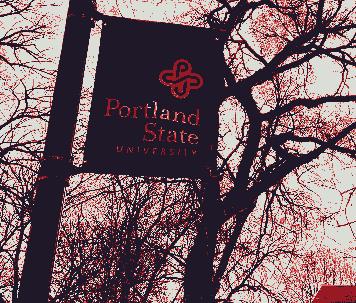


On March 7, 2025 at 2:30 p.m., Portland State’s Vanguard and Subbasement Studios sat down for a press conference with President Ann Cudd. Using a list of questions supplied by students, the press conference shed some light on the future of PSU and its student body.
Isaiah Burns sat down with Cudd in her office to start the conference. While the questions ranged from past issues, present dealings and future problems, there can be no denying that there was a bit of tension.
Cudd started with a preamble that ensured the safety of the students no matter what state the university was in, stating that PSU is about “inclusion, not exclusion. We’ll keep operating as we always have.” She ended with an announcement that PSU’s homecoming game would be at Providence Park. While this was meant to be reassuring, it felt slightly like a reassurance sandwich, with bad news sandwiched between “good” news.
Burns moved into a question regarding what Cudd views as some of the biggest accomplishments of her administration, to which she replied that she is proud of surviving her first year, graduation day being the best. This was all said despite her admitting to the current decline in enrollment.
When questioned about that decline, especially in the midst of the 18 million dollar deficit in the budget, she said that this happens and that enrollment generally ebbs and flows.
“I’m hoping for the flow,” Cudd said.
She then went into PSU’s talk of a strategic plan to attract new students and improve retention and graduation rates. According to Cudd, she has a vision for a “20/30” future that creates clear pathways, leads the Pacific Northwest in serving marginalized communities and empowers employees.
“Our future depends on Portland’s future,” she said.
Cudd said that making our campus more welcoming to families and ultimately driving a resurgence of Portland is essential to PSU’s own enrollment. This initiative to make our campus safer feels like a slap in the face in the midst of many incidents and lack of responses from campus safety. Finding human feces and drug paraphernalia on the sidewalks outside campus buildings does not create an atmosphere that promotes any family’s safety. Many students who have had to call campus security have been turned away with no help or followup.
Part of Cudd’s new initiative includes campus expansion as many new buildings go up, to which Burns responded with what was on everyone’s mind: is this justified in our current financial situation?
She responded that buildings like the new Vernier Science Center and the new Arts + Culture Center will require operating expenses, but does not anticipate them contributing to overall expenses as they are a “longterm investment.”
She mentioned that many buildings such as these are funded by donors and state bonds that “we don’t have to pay back,” and that such debt is carried by the state.
Burns switched the conversation with a few questions regarding the upcoming layoffs and what that means for faculty and students alike. With a union strike looming, Cudd responded with a brief summary of current negotiations and plans for the future.
“We have to avoid a strike. We’re working really hard . . . That would be disruptive,” she says.
Cudd explains that she feels a great deal of sympathy for those affected by the layoffs since members of her own family felt those effects. She assured that remaining faculty members will be able to maintain the new workload as things shift. And then, she reassured listeners that in the face of a strike, classes will remain.
“We know that there are going to be a fair number of faculty available, and we will be hiring outside . . . We are of course making plans for worse case scenario,” she says.
As Burns wrapped up the interview, Cudd closed with a statement that students should keep the future in focus and be proud of their time here at PSU.
“Hang in there. The best is yet to come.”
For a more in-depth look at this press conference, please visit https://youtu.be/nA81wfXNO3E?si=5t4zXXidc3kDBonz to watch the other exchanges and questions presented by Vanguard, as well as to formulate your own opinions and questions to bring up to your very own student government, ASPSU.

BY ARIANA PROTSMAN, RIN KANE, REBECCA MOSS & KAITLYNE BOZZONE
Vampires Will Never Hurt You
My Chemical Romance
Bleed Hot Chelle Rae
For What It’s Worth Buffalo Springfielt
Forever & Ever More
Nothing But Thieves
Lonely Vampire Weathers
Dead Girl Walking
Jensen McRae
5 Million Ways to Kill a CEO The Coup Lust for a Vampyr
I Monster
Dead Inside Younger Hunger
Transylvania McFly
Ping Pong
Stereolab
Bloodletting (The Vampire Song)
Concrete Blonde
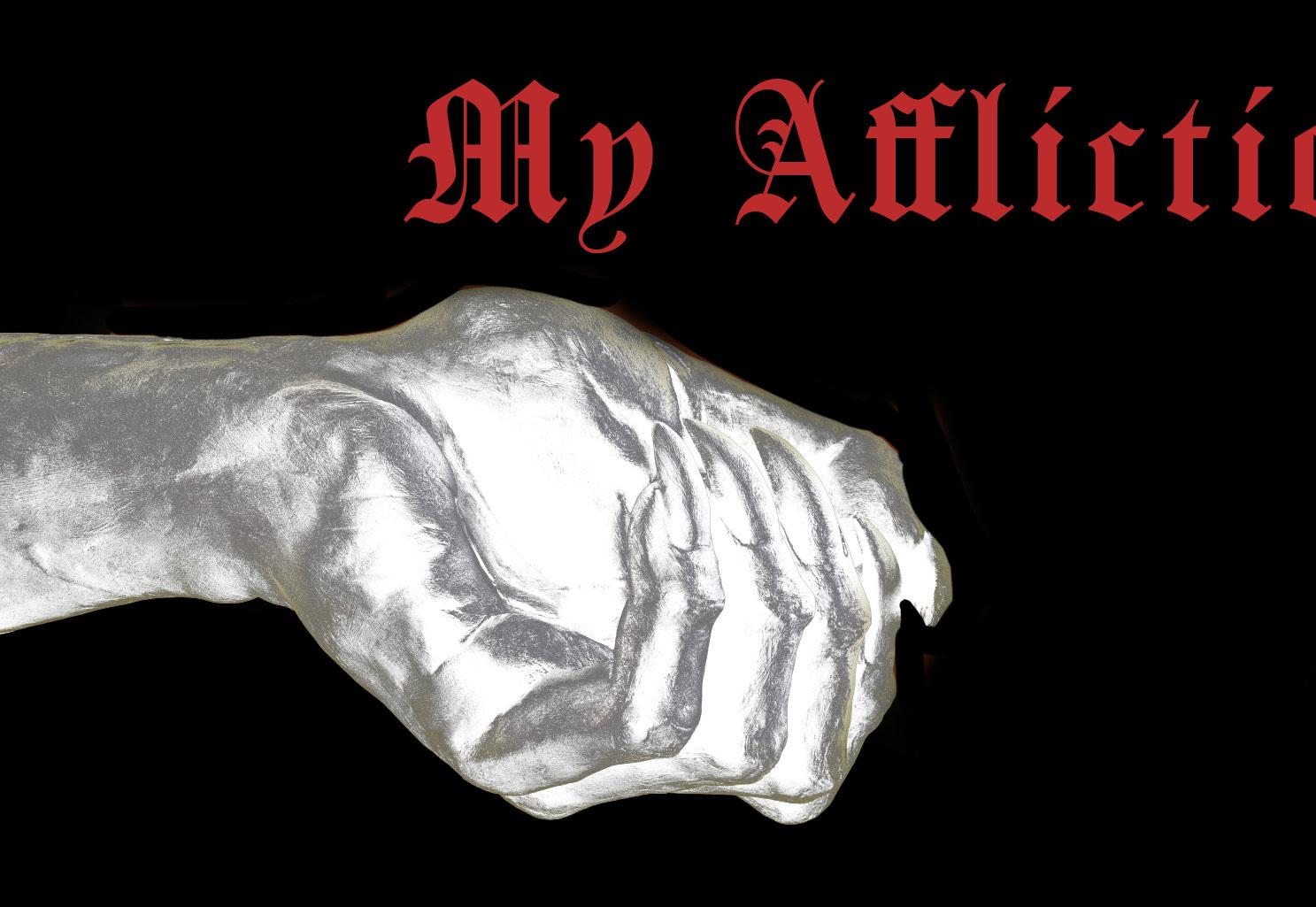
by author

BY ARIANA PROTSMAN
“Nosferatu” (2024) directed by Robert Eggers is a visually beautiful, and terrifying, retelling of the classic 1922 film titled “Nosferatu.” The cinematography and lighting adds to the atmosphere to create a constant state of dread, with the only relief coming at the finale.
The story follows Ellen, bride to Thomas Hutter, as she becomes plagued with the presence of the Nosferatu. From vivid dreams to crippling depression, Ellen’s life lacks color and happiness. When her husband Thomas must travel to Transylvania to sign a big deal with the reclusive Count Orlok, their situation worsens.
Not only does Ellen begin suffering fits and dreams involving Nosferatu, Thomas soon begins to suffer likewise as he nears the castle belonging to Orlok. Trudging through visions and illness, Thomas barely survives his trip and stumbles back to his wife.
As they come to terms with the looming presence of Nosferatu as he comes to take his claim on Ellen and destroy those around her, sacrifices are made and beliefs are tested.
While I consider myself a horror fanatic, I will admit that gothic horror has never been my favorite (so, take my opinions with a grain of salt). I have to admit that the cinematography and shots were so hauntingly beautiful. The toggling between the colorized world and the absolutely desaturated hell that Ellen faced in Nosferatu’s presence was striking. I felt as if it was a certain nod towards the original black and white film.
Regarding the story, I did find that it moved a bit slower than I liked. There were many elements in the story that I found interesting but not fully fleshed out. For example, what exactly was the purpose of the village Thomas encountered right before he found Count Orlok’s castle? Perhaps they were meant purely as a warning, but their introduction felt more personal, as if they were going to have a much more important role later on, perhaps regarding the lore of the Nosferatu. Especially concerning the exorcism of sorts, I wish they had played a bigger role.
Additionally, I felt as if Ellen’s character was severely underrepresented. A large portion of the movie didn’t even include her input, which I can presume was
according to their belief that it was merely a “fit.” Lily Rose Depp did a most excellent job in this genre and I wish I could’ve seen more.
Despite all this, there were various memorable moments that left me in shock. While I wish I could say it had the horror elements and gore, this movie lacked a bit in that department, if I am honest. Yes, I truly hate rats and now hate them even more. Yes, dark corners still make me feel uneasy. But, I wish there could’ve been more.
The moments that stuck with me the most were some of the line deliveries. With such an amazing cast full of some of my favorite actors, this comes as no surprise. The foremost scene comes from Bill Skarsgård, who plays Count Orlok. As he states the terms of their situation and how Ellen is meant to be his, the scene is so gothically romantic as he tells her the line every girl wants to hear.
“You are my affliction,” he says.
He may be the villain, but the wording is magnificent.
Then, the last comes from Nicholas Hoult, who plays Thomas Hutter. While Nicholas Hoult is a phenomenal actor, I have yet to see him in a role that I like. Many of his characters that I have seen have never been the most respectable (*cough* “The Menu” (2022) *cough*), and his role as Thomas is essentially no different. However, there are more redeeming qualities as he takes his efforts to save his wife. However, it is in the middle of their argument that he delivers one of the most telling and terrifying lines in the whole film.
“There is a devil in this world and I have met him,” he says.
While there are many opinions ranging from love to hate about this movie, I think that for the genre, it fits perfectly. If you’re a fan of “Crimson Peak” (2015) and “Sleepy Hollow” (1999), this movie is for you.
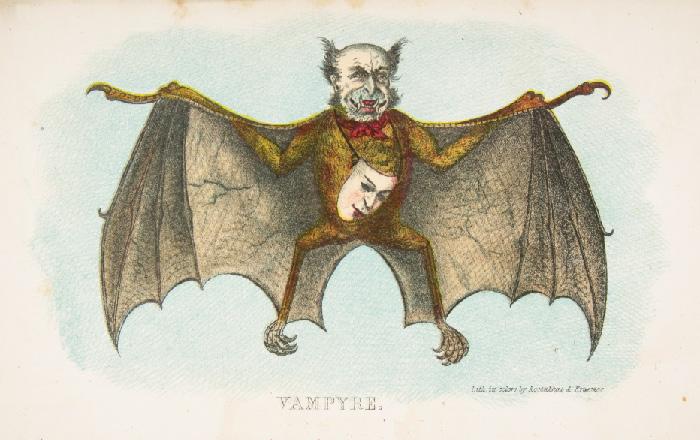
graphic sourced from the public domain review
On March 3rd, crowds gathered outside the Tesla dealership on S Macadam in Portland, protesting the corporation’s involvement in the current administration. A day later, President Donald Trump—who cannot currently drive—vowed to purchase a Tesla during an exhibition in which Elon Musk rolled out five Teslas for show in front of the White House.
Tesla’s stock has been tanking around the world since the inauguration, as Musk’s controversial position as the head of the Department of Government Efficiency (DOGE) outrages people everywhere.
According to Stephen Fowler’s NPR article, DOGE announced a goal to cut $1 trillion in fiscal spending
BY RIN KANE
by September. As of March 3, they’ve boasted $105 billion in cuts, the largest of which have come from USAID and the Department of Education. However, the receipts provided on DOGE’s website have been shown to be frequently misleading, with certain claims quietly removed, and the public providing calculations showing that the posted receipts don’t match the amounts said to have been saved.
Just some of the departments affected by these cuts include: the Department of Defense, the National Institutes of Health, the Department of Homeland Security, the Environmental Protection Agency, the Department of Health and Human Services, the Department of Agriculture, the Department of Labor,
As
of March 3,
[DOGE has] boasted $105 billion in cuts, the largest of which have come from USAID and the Department of Education.
the Food and Drug Administration, the Department of Justice, Social Security Administration, the U.S. Geological Survey, U.S. Fish and Wildlife Service, the Bureau of Indian Affairs, the Department of Energy, and the National Archives and Records Administration.
However, according to Fowler, “DOGE has so far focused on things like contracting and employee head count, which account for a small slice of the government spending pie. It recalls a similar move for Musk, who, after he bought Twitter in 2022, got rid of most of the staff. But unlike private industry, where employee salaries and benefits are the top expense, in the federal government personnel costs make up just about 4% of spending.”
These cuts caused a wave of National Park Service employees to be laid off last month, sparking rage on social media as workers shared their grief, pain, and desperation over losing the jobs they loved. In February, fired workers at Yosemite National Park hung an American flag upside down off El Capitan, a powerful image of distress and a commentary on the administration’s impact on everyday lives.
All this came on the heels of the January controversy when Musk performed a Nazi salute during a speech at Capital One Arena. His supporters have vehemently denied the gesture, but global Jewish leaders and scholars of far-right extremism have stated that “Musk had unambiguously performed the Nazi ‘Heil Hitler’ salute.”
Since these events, Americans all over the country have taken to the streets to protest Tesla, hoping that a dent in the company’s stocks and profits will convey the anger of millions against an unelected individual wreaking havoc on so many lives. The protests are
further fueled by rumors that Tesla products will start to be integrated into the government, such as Cybertrucks being updated for use in the military, and concerns that one of Musk’s end goals is to privatize social security.
Indeed, signs at the March 3rd protest read things such as, “No One Voted for Elon the Muskrat,” “Tesla Funds Fascists,” “Make Mine a Tesla Model Nein,” “De-Musk America,” and “Burn a Tesla, Save Democracy.”
President Trump has addressed the boycotts on his social media platform, Truth Social, saying, “ . . . the Radical Left Lunatics, as they often do, are trying to illegally and collusively boycott Tesla, one of the World’s great automakers, and Elon’s ‘baby,’ in order to attack and do harm to Elon, and everything he stands for.”
Multiple protestors at the Portland Tesla dealership have vowed to continue organizing protests every Saturday for as long as it takes to see change happening in the upper echelons of the government.
In the meantime, Tesla stock has plunged nearly 48% this year, losing more than $700 billion in market value and slashing Musk’s personal net worth by roughly $148 billion, about a quarter of his peak net worth of $464 billion.
Americans all over the country have taken to the streets to protest Tesla, hoping that a dent in the company’s stocks and profits will convey the anger of millions
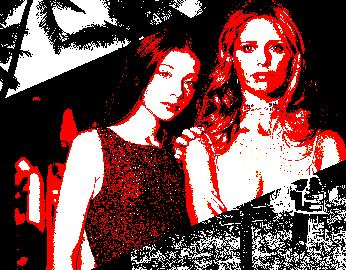
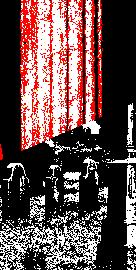
BY KAITLYNE BOZZONE
February 26, 2025. News breaks that Michelle Trachtenberg (1985–2025) has died. Known for her roles in “Gossip Girl,” “Harriet the Spy,” “Ice Princess,” and, of course, “Buffy the Vampire Slayer,” Trachtenberg was promptly mourned by dedicated fans and casual followers alike, remembering her impact on their adolescence or lamenting her early and tragic fate.
September 26, 2000. The season five premiere of “Buffy” airs, and at the end of the episode viewers get a shock: Buffy Summers, the titular vampire Slayer, has a sister. Everything fans think they know has suddenly, drastically changed.
Dawn Summers had an undeniable and important impact on the trajectory of “Buffy,” but she wasn’t accepted
with open arms, and neither was Trachtenberg. Dawn was special to the show and to Trachtenberg herself, the same age as her character when she debuted, and I want to take a look back at Dawn’s story, her impact, and why she matters—to Trachtenberg and to all of us fans of “Buffy”.
In the wake of the actor’s death, fans have been revisiting her iconic roles, but Dawn has gotten little attention. It’s easy to trace back why. Her introduction, which placed her not as a new character we had to get to know but instead as an established member of the “Scoobies” team, altered the perception of her role in the story and gaslit viewers in one fell swoop.
Buffy pops in to grab her jacket. The room is semi-packed-up for college and it’s a mess.
In the middle of it all - rifling through one of Buffy’s boxes - is DAWN, 14. She’s pretty, awkward, faintly obstinate - and she’s Buffy’s little sister.
What are you doing in here?
Dawn’s about to reply when Joyce’s voice calls in from the hall.
Buffy? If you’re going out - why don’t you take your sister with you?
A beat. Then both Dawn and Buffy shout in protest-
BUFFY & DAWN (together) MOM!!
Dawn’s introductory scene from “Buffy vs. Dracula”
The following episode, “Real Me,” was Dawn-centric, the first real taste we were given of who she was: an immature, whiny, and argumentative 14 year old. The audience that had grown up alongside Buffy wasn’t a fan of a character so downright irritating. It didn’t help that Buffy and their mother, Joyce, were so prone to infantilize Dawn, requiring babysitters for her and shielding her from the realities of Buffy’s role as the Slayer, even though she wasn’t much younger than Buffy herself was when she inherited the role. Things only got worse for Dawn’s perception in season six, “where her character was largely stuck complaining, moaning, and getting on people’s nerves,” James Hunt wrote for Screen Rant.
Dawn was hated with a passion, and that hatred defined many fans’ opinions of the later seasons and shaped reactions to the young Trachtenberg. In an interview with IGN Filmforce, show creator Joss Whedon commented on fan reactions and Dawn’s unrealized potential: “In season six, people were like, ‘Oh, she whines so much.’ I sort of scratched my head. I was like, ‘Excuse me, she’s been abandoned by about six parental figures. The girl has huge issues.’ At the same time I was like, ‘You get it... we sort of run the same note for a while, they’re not wrong.’”
Dawn’s only crime was being an “annoying” teen girl, but it was enough for viewers to ignore the importance she had. Her story wasn’t simple: originally a mystical energy known as the Key, Dawn was given a human form and
placed as Buffy’s sister. False memories were implanted into the people around her to make them believe she’d always been a part of their lives. Finding out the truth of her existence rattles Dawn, and she resorts to more acting out and self-harm. She’s terrified to discover she isn’t even real, and it only gets worse when her mother dies suddenly from an aneurysm and the big bad of the season, a hell god called Glory, is hunting Dawn down to use her blood to break down dimensional barriers. To save the world and, more importantly, her little sister’s life, Buffy sacrifices herself, realizing their blood is the same.
Season six shifts Dawn into a whole new perspective. She isn’t whiny and annoying, this is a deeply traumatized girl, trying her best to find where she belongs in a complicated world, alone. Her existence doesn’t just open the story up to an important and non-romantic relationship for Buffy, but she humanizes “evil” vampire Spike, unites the rest of Buffy’s friends with a common goal, and injects the consequences of this life back into the world.
Despite her origin, Dawn is a normal girl in seasons six and seven. She commits herself to fighting demons and vampires with her sister not because she’s a “Chosen One” with a sacred duty, and not because she has some special skill that makes her particularly able to help. She does it because she wants to, because of her love for her friends and the family they’ve become. She doesn’t
turn her back or shield her eyes, she picks up a sword and a book and molds herself into the kind of brave young woman she wants to become. No one chose Dawn’s fate for her—she did that all on her own.
“you didn’t hate dawn summers,” User fang3d4 writes in a Tumblr post from 2024, “you probably were her. Btvs gave us 4 seasons of putting ourselves in the shoes of supers. Sure, every demon was a metaphor for the struggle of growing up, but there was a separation… And then there was a lonely teenage girl, sitting alone on her couch, watching the supers and wishing she could be them. And that was probably way closer to home.”
I can’t hate Dawn. I can only hope that the teen girl I was would have been as brave and resilient as she was in her situation. So many of us wanted to be in worlds like the “Buffyverse” or from the fantasy novels we read, but how many of us could have handled going through what Dawn did? She represents the best of us, the fans, and by extension so does Michelle Trachtenberg. That is her Buffy the Vampire Slayer legacy: she won’t be remembered as whiny or pathetic, but as brave as teenage girls can truly be.
“you didn’t hate dawn summers, you probably were her. Btvs gave us 4 seasons of putting ourselves in the shoes of supers. Sure, every demon was a metaphor for the struggle of growing up, but there was a separation… And then there was a lonely teenage girl, sitting alone on her couch, watching the supers and wishing she could be them. And that was probably way closer to home.”
BY KARA HERRERA
“My Hero Academia” (MHA) was a serialized Japanese manga that was published in Shounen Jump from 2016-2024. A hugely popular franchise in America (with its eighth and final animated season set to air in Fall 2025), it depicts Izuku Midoriya, a 15-year old boy who dreams of becoming the greatest hero. Taking place in an alternate universe where 80% of the world’s people possess a unique superpower, Izuku is one of the few in society to be born powerless—or “quirkless”. However, when he does end up gaining a special power, his whole life’s trajectory then shifts, and we get to join him as he sees his dreams turn into reality.
The story beats that I’ve just described sound very familiar to you, I’m sure. A story focusing on a teenage superhero is hardly a revolutionary one—in fact, I would argue that it’s the direct opposite, especially for the US with its long history of still-widely-read comic book hero franchises. For MHA, though there are some slight flavor-differences between it and mainstream juggernauts DC and Marvel, I believe that many will see “My Hero Academia” as a very safe, standard coming-of-age story, with fun, low-stake-heavy worldbuilding.
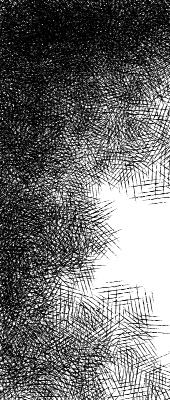
Despite all the seemingly classic archetypes and story beats, I believe MHA actually depicts a much different story than first expected—one of a violently radical revolution in late-capitalist Japan. And let me just go on the record—I would even claim that “My Hero Academia” is, at its core, a socialist manifesto. Now before I can delve deeper into why I believe this to be the case, it first needs to be established what the societal frameworks in MHA look like, and how those frameworks interact with the story’s depiction of modern Japan.
To make sure that we’re all starting on the same page, when I use the term late-capitalist, I specifically am pulling from Fredric Jameson’s analysis in “Postmodernism or, the Cultural Logic of Late Capitalism”. I’m referring specifically to how modern capitalism commodifies products globally, and does so with things that were not traditionally consumable before; for example, according to Jameson, the creation of art itself becomes “institutionalized and [is then] at one with the official culture of Western society . . . aesthetic
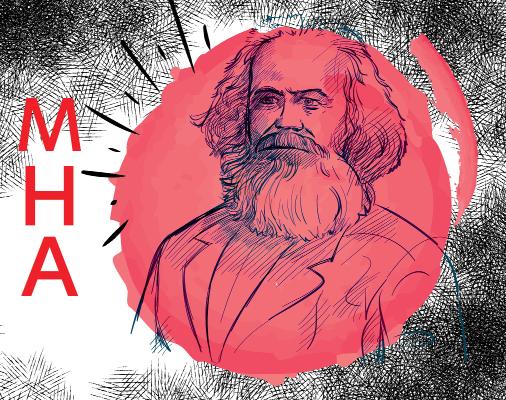
production [then] become[s] integrated into commodity production . . . at ever greater rates of turnover, . . . assign[ing] increasingly essential . . . position[s] to aesthetic innovation and experimentation”.
For Jameson’s analysis, we can obviously see it to be based on a Western system of capitalism—one where individualism has a high value and informs all aspects of the greater society. In contrast to this hyper-individualistic capitalism of the US, Japan’s modern society adheres to a collective capitalist framework. The difference between the two that I want to highlight is that: individualist capitalism relies on consumers and businesses acting for their own interests in order to be rewarded, while collective capitalism relies on the opposite somewhat—consumers and businesses having to cooperate for the same outcome. However, capitalism can never truly thrive without self-interest being one of the main forces supplying it, and we see this in both MHA’s depiction of modern Japan, and its real-life counterpart. These critical takeaways are of course an extreme summarization of preliminary studies on capitalism as a socioeconomic framework, and I recommend doing your own research and reading into the subject further.
The collective capitalist ideology of Japan is what creates the system of commodified hero-work in “My Hero Academia.” We can see the realization of this by looking at how heroes have been integrated into the Japanese economy. Since superpowers/”quirks” have been a part of society for about 100 years prior to the start of the series, there has been plenty of time for market systems to take root. For context, heroes are a part of hero agencies, and are paid on commission as government contractors; the amount of wages a hero earns is decided by a government committee investigating the forms that a hero submits after dealing with an incident (rescue of a citizen, criminal behavior, etc.). Now in a capitalist society, one has to always be thinking about how to increase their own capital, for fear of becoming a member of the lower class—someone who gets exploited and victimized by the system; to prevent that, a participant of capitalism usually focuses on acquiring more and more monetary funds.
For heroes, this means thinking of how to earn wages outside of government contract work; a hero is inherently limited in the amount of work they can do, firstly because hero-work itself is a finite resource, but also because there is a judgment criteria for how much a hero earns that is subject to human interpretation/error; finally, a hero’s ability (or inability) to outperform their peers can and does fluctuate, adding more instability to a hero’s lifestyle.
The collective capitalist ideology of Japan is what creates the system of commodified herowork in MHA
In MHA, this need for wealth acquisition has led many heroes to become celebrities. Of course, becoming a public figure and earning money from merchandise, commercials, and sponsorships is a legitimate method of securing funds and can support a hero when/if their government contract work cannot. At the start of Chapter 1, this business model has proliferated so much that it has become the norm in not just Japan, but in the
global market as well. This normalization encourages heroes—both consciously and unconsciously—to prioritize their public image and perception above nearly all else; lose your popularity, and you lose a stable avenue—perhaps your only alternate avenue—to access funds. Nowhere is this commodification of heroes shown more clearly than with the hero rankings.
In MHA’s Japan, Pro Heroes are officially ranked based on their displayed strength, the number and importance of the incidents they deal with, their popularity, and their overall contribution to society. The Top 10 Heroes are announced every year during The Hero Billboard Chart—and I can’t even analyze that name in relation to commodification, it speaks for itself. To refer back to Jameson’s analysis on Western capitalism, instead of the creation of art becoming the byproduct of late-capitalism, in the world of MHA, heroes have become the commodified product in question.
One of the outcomes of this is social stratification— briefly defined as the process of creating an upper, middle, and lower class in a society (with further subdivisions within those three classes). Heroes—particularly the most popular ones—are a privileged class, and as we can all surmise, this means that popular and highly-ranked heroes have access to benefits that the rest of the population does not. The hero Endeavor, Enji Todoroki is one example of this.
From here on out, there will be spoilers for Chapters 31 of the manga and onwards.
Enji Todoroki has a fraught personal life, to say the least. From accounts from both his family and his own admission, he has had a long history of child-and-domestic abuse. Is he ever subjected to some kind of trial for these actions? No. The subject of a trial is never really brought up.
To be clear, Enji’s character at a later point in the story begins to regret his actions, especially when— spoiler!—one of his sons is revealed to be a mass-murderer. Enji seeks to atone for his past, and it’s interesting to see the variation of his family’s responses to that. My focus though, is not to discuss ideologies of penance or deservedness of punishment; my point is that because of Enji’s status as the No. 1 hero, that makes him exempt from even being considered to be eligible for a trial. On one hand, one can argue that during wartime (which is a major plot arc of the story), there is no time for due processes like court trials and the
like; nevertheless, even when society stabilizes, there is clearly no intent to even entertain the voice of not pressing charges; it’s as if the idea that Enji would even try to be brought to justice is absurd. Why? Well partly because both domestic and child abuse are underreported and not given a lot of societal weight. But, this lack of system accountability for Enji is also due to him being a top hero. Enji is weighed and measured as a product—a high-ranking hero—and has been determined to be exempt from the justice system because of it. Instead his family is given the burden to focus on how to move on. Some of his children choose to never forgive him, some say that they will, others choose to repress and try to adapt; but at no point does anyone, even those from outside of the Todoroki family, bring up that what Enji did were crimes that would normally be punished.
So we can see that hero society creates a system where public perception and perceived human value become the means to accessing a high quality of life. Even when it is revealed to the public what Enji did to his family, he is still exempt from the justice system due to his perceived value as a hero/government contractor, and the public’s lack of attribution of serious weight to his crimes.
is actually so violent that important characters are killed off, on both sides.
Throughout this violent revolution, Horikoshi (the author) continues to evoke sympathy for the villain characters, spending time exploring their backstories and their legitimate grievances against how they have been treated in society. Moreover, Horikoshi shows hero characters becoming disturbed and disillusioned as they’re confronted with the deep-set exploitation and abandonment of human beings in their society.
The intent behind this is to avoid dictating what the correct course of action is to create a better society; rather, by portraying characters that have been exploited by capitalism in a sympathetic way, this queries and protests against capitalism, and allows readers to come to their own conclusions about its flaws.
Okay, so we’ve established that yes, Japan in MHA is a capitalist entity (like it is in real life) that privileges some citizens and—we can presume—discriminates against others; in what ways does “My Hero Academia” then criticize and query that system?
Besides intentionally exploring the wants, desires, and ideologies of Villains—some of which include nihilistic anarchy—MHA’s last story arcs show what can happen when a society based on capitalism begins to erode.
Individuals who are seen to exist outside of the norm like “mutants” (those with quirks that alter the actual appearance and structure of the bearer), those with “villain-like” powers, and of course, people who are born into poverty and cannot find legitimate work—all and more make up the population of disenfranchised citizens in MHA.
As more heroes then enter the career field in search of fame and money—what would equate to lifetime stability—more and more people end up being discriminated against and ostracized. Eventually, something has to give, and for MHA, what happens is a violent uprising of villains against the status quo; the uprising
There’s a lot more that I haven’t even touched on, such as the government surveillance agencies that employ heroes to monitor and even assassinate public figures that give bad press. I could talk more about the nihilistic anarchy that we see rampant in the League of Villains, or how when villains organize in a way that mimics capitalism (Overhaul), they become the enemy of other, more liberal villains. I also could speak more about reform and how the police in MHA clash ideologically with the young, teenage heroes. In general, there is a lot Horikoshi has to say about how only the youngest generation of heroes-in-training have the ability to challenge and alter the current system.
I’ve really only just scratched the surface of what makes “My Hero Academia” more socialist and radical than you think.

BY AJ ADLER

Rotten Tomatoes
Audience Reviewer
Take: Nicolas Cage ruined “Renfield” 20%
Hot Take: Nicolas Cage was the wrong casting choice for Dracula in “Renfield”” 40%
Thesis Statement:
“Renfield” is funny as a dark comedy, but the serious moments would have hit harder if Nicolas Cage’s Dracula was less funny, and more scary. 60%
“Renfield” has two tones running throughout the movie: dark comedic bloodfest and a man learning how to leave an abusive relationship. I love “Renfield” as a dark comedy. Most of the jokes come in the form of punchy dialogue or are gross-outs. (The main character eats bugs to gain superpowers.) The action scenes are hyperviolent and insanely gory. I say this with all the love in my heart, it is hard to watch sometimes.
What falls flat are the scenes that are meant to be serious. Scenes that are clearly set up to be a tonal shift end up being caught between too serious to be funny and just funny enough that you end up asking yourself “Should they be joking about this?” Admittedly some of those scenes fall flat because I don’t think this was Nicolas Hoult’s, or Awkwafina’s, strongest performance, but I would actually attribute most of the reason that those scenes don’t work to the portrayal of Dracula, by Nicolas Cage.
Say you’re watching “John Wick”. You’re watching the scene where his wife is getting sicker and sicker. As she passes away, the last gift she leaves her husband is a puppy and a note saying she wanted him to have a companion even after she was gone. And then, as you’re wiping the tears from your eyes, these punkass kids come in and kill the dog. I’d wanna murder them too.
The serious elements in “John Wick” work because they successfully create an emotional response within the viewer that grounds them to the story, despite the ridiculous and overdramatic premise. As the shadow
on Renfield’s life, Dracula has the potential to evoke an emotional connection with the viewer. John Wick loved his dog, so the viewers needed to love his dog too. Renfield is terrified of Dracula and wants to get out from under his thumb. This means the viewers also need to be terrified of Dracula so that they can emotionally connect to Renfield as he tries to leave Dracula behind. This is a nuance that, in my opinion, Nicolas Cage fails to deliver.
Consider this quote from Dracula in “Renfield”:
“I use my power for a lot of things, but I didn’t need to use it on you. You were a lawyer who wanted to get rich off a real estate deal. You’re the one who used me. You used my power because you’re a husk. An empty void that nothing can fill. The only thing that gave your life any meaning was my power. The power you used to bring me victims while you pretended to be one yourself. However, I’m the real victim here. I’m the one you swore to protect. And you abandoned me.”
A genuinely scary line that I could see someone in an abusive relationship would say to the person they’re trying to control. Now imagine Nicolas Cage with rings on all fingers, slicked back hair, white face paint, and a glittery suit, slurring these lines at the top of his lungs around a jaw-full of shark teeth. Instead of being in control, he comes across as a kid playing dress-up throwing a tantrum. Still dangerous given the fact that he’s Dracula, but not a puppet-master that holds Renfield’s strings. The movie is chock full of lines like this one
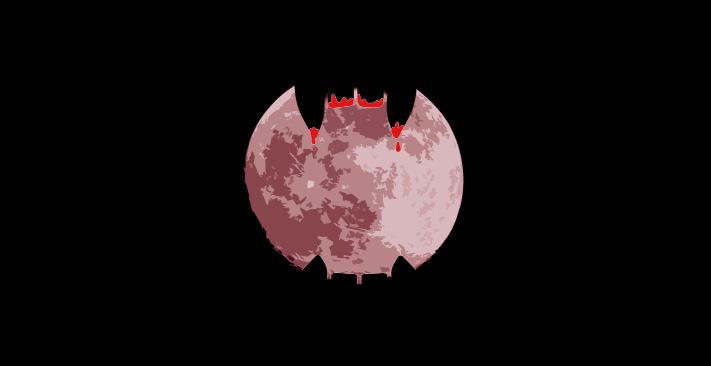
“I use my power for a lot of things, but I didn’t need to use it on you. You were a lawyer who wanted to get rich off a real estate deal. You’re the one who used me. You used my power because you’re a husk. An empty void that nothing can fill. The only thing that gave your life any meaning was my power. The power you used to bring me victims while you pretended to be one yourself. However, I’m the real victim here. I’m the one you swore to protect. And you abandoned me.”
where Dracula could have been a terrifying manipulator, but the movie just never gets there because of how Dracula is portrayed.
I would like to say that I don’t think all of this is on Nicolas Cage. I doubt he had much consultation on the costumes or the makeup. However, the Nicolas Cage acting school of being angry and shouty doesn’t lend itself well to the word “control.” And he needed to have control over Renfield and the situation for the audience to emotionally connect with Renfield and root for him to escape, instead of looking at Renfield and going “This guy?”. In every scene he’s in, no matter the context, Nicolas Cage hams it up for the laughs, undercutting serious moments and the overall message of the movie. Based on “Adaptation”, I think it would be possible for Nicolas Cage to pull off the tonal whiplash necessary to play Dracula well, but it would definitely be easier and less against type for a different actor, so my advice would be to nix Nicolas Cage to make a better movie.
I’m not saying this is the only change I would make. To be honest,I think the dialogue was a bit stilted, especially in the serious moments, and the main cast was not giving this movie their all. However, I don’t think it’s as important that the protagonists get their roles as it is
the emotional connector. If “John Wick” could make an audience connect to one-face Keanu Reeves, “Renfield” could have done it with a fairly expressive Nicholas Hoult. Dracula just wasn’t as scary as he needed to be for the audience to feel what Renfield was going through.
The tag “Nicolas Cage as Dracula” probably made them most of their money, though, so who’s to say if it really was a wrong casting decision.
BY SHAAN BIR

One of my earliest jobs was working at a Starbucks in Lake Oswego in 2019. It was a great experience, and I think that everyone should at least work once in a retail or hospitality setting. It teaches you many life skills. But while working there, I learned I wasn’t fast enough. Especially when it came to Frappuccinos, anything that required extra steps, I was taking my time. The worst thing was to look back and see a line of cups sitting there waiting to be filled. Recently, I had some weird experiences at Starbucks – underwhelming, and sort of decaffeinated.
I had just gotten out of class and decided to stop by Starbucks to work on a project. I found a seat, opened my laptop, and started working. Not even five minutes later, a barista walked up to me and said there was a new policy—customers had to buy something if they wanted to stay.
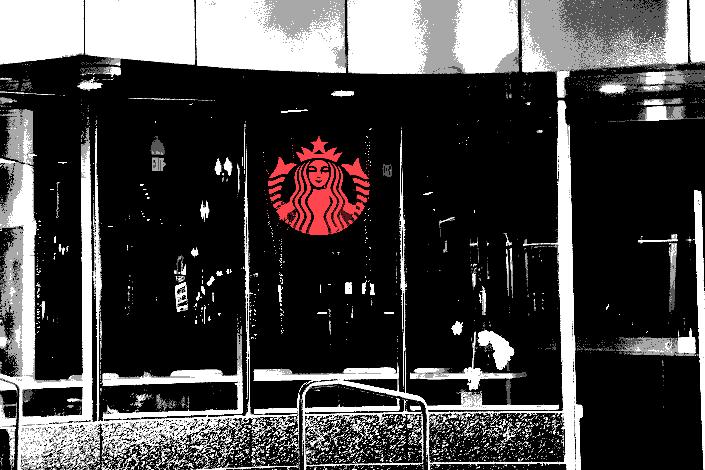
Wait… what?
And then I noticed another employee, in a green apron, talking to a homeless man sitting nearby. A few words were exchanged, and just like that, he was asked to leave.
It caught me off guard. Starbucks has always felt like one of those third places where you could just exist— students preparing for their classes, freelancers typing away, friends chatting for hours. But now? It felt different, like the space came with an unspoken price tag.
I get it—businesses need paying customers, but where do we draw the line between keeping a store running and making people feel unwelcome? And more importantly, who gets to stay, and who gets shown the door.
Meanwhile, the corporation spent over half a billion dollars ($507.8 million, according to Statista) on advertising last year. That’s an increase from $416.7 million (according to Statista) the year before. Their recent Super Bowl ad, “Hello Again,” played AC/DC’s “Thunderstruck” while baristas prepared drinks, wrote names, and notes on cups. Nostalgic? Sure. But it’s also a little ironic, given that the personal touch was taken away as Starbucks increased automation.
In a recent interview with The Wall Street Journal, new CEO Brian Niccol stated that writing on cups will return, as will amenities such as condiment bars and free refills for all customers. It’s part of an attempt to bring back the old-school “community coffeehouse” vibe.
Here’s the thing: you can’t advertise your way into authenticity. If the in-store experience starts feeling more like a gated lounge than a welcoming space, no amount of AC/DC or clever cup messages is going to change that.
Because when the message says “welcome,” but the vibe says “buy something or leave,” people notice.
According to the article titled “Starbucks baristas call 5-day strike. Here’s what to expect in Seattle” in the 2024 December Seattle Times report, Baristas in some of Starbucks’ busiest cities – Chicago, Los Angeles, and Seattle – walked off the job and stayed out through Christmas Eve.
The strike was organized by Starbucks Workers United, the union representing store employees, and it came after months of frustrating contract talks. According to the union, Starbucks had promised to reach a deal before the end of the year – but never followed through.
So, during one of the company’s most lucrative times of year, workers said “no contract, no coffee.”
“We were ready to bring the foundational framework home this year, but Starbucks wasn’t,” union president Lynne Fox said in a statement. “After all Starbucks has said about how they value partners throughout the system, we refused to accept zero immediate investment in baristas’ wages and no resolution of the hundreds of outstanding unfair labor practices.”
The strike wasn’t just about stalled negotiations. Starbucks had already faced accusations of union busting, with workers claiming the company shut down stores that voted to unionize. Starbucks denied the claims, saying the closures were due to things like lease issues, building problems, or safety concerns. According to The Seattle Times report, the National Labor Relations Board wasn’t convinced – in December, it filed a complaint demanding Starbucks reopen eight stores in Seattle that had been closed.
The holiday strike turned out to be one of the largest moves yet in the Baristas’ fight for a fair contract. And while customers may have missed their Peppermint Mochas, workers made it clear they were done waiting for corporate goodwill.
According to Wall Street Journal, the new CEO Brian Niccol earned nearly $96 million after just four months on the job, thanks to a massive pay package detailed in SEC filings. That included $90 million in stock, a $5 million signing bonus, and just over $61K in salary. Most of the payout came from stock tied to his former role at Chipotle.
Capitalism experiences periodic instability and crises due to its internal dynamics. Former CEO Laxman Narasimhan was ousted by the activist investor, Elliott Investment Management, that is there to push for changes that it thinks management is not doing quickly enough or not doing right.
In addition, Starbucks quietly ended its open-door policy, now requiring customers to make a purchase if they want to stay or use the restroom. The coffee giant rolled out a new code of conduct banning things like smoking, outside alcohol, drug use, and panhandling.
Under Niccol, the company said staff would be trained to enforce the rules – and law enforcement could be called if needed. The move marks a shift back to stricter store policies after years of trying to be more inclusive.
Repealing Measure 110 – Oregon’s law that decriminalized small drug possession – has had serious consequences for homeless communities. The policy was designed to shift drug use from a criminal issue
to a public health one, connecting people to treatment instead of jail. Rolling it back has created more arrests, fewer treatment options, and a return to a cycle of incarceration that hits unhoused people the hardest. For many already struggling, it could push them further from stability – and deeper into the system. The fallout could reach beyond the streets – even into places like Starbucks.
Combine that with Starbucks’ new policy mandating purchases for restroom use, and you have a significant setback. Homeless individuals who once found a warm seat or safe restroom may now face both criminalization and locked doors – no coffee, no compassion. While I’m not advocating for public drug use, for many people experiencing homelessness, drug use can become a coping mechanism as a means to survive. When Starbucks introduced a new code of conduct discouraging loitering, it disproportionately affected homeless individuals, because of their appearance or behavior, and that they might be simply unwanted. The repeal of Measure 110 signals a shift towards criminalization and when it’s paired with corporate policies that exclude marginalized groups, it highlights an increasing social trend – to push homelessness out of sight – whether by law or through private properties.
‘To sanitize public spaces by removing individuals who don’t fit’ is a form of exclusion, disguised in the form of law and safety. For a company like Starbucks – whose mission is “to nurture the human spirit – one person, one cup, and one neighborhood at a time”, I’m left questioning – ‘does the human spirit have to smell like a Pumpkin Spice Latte?’
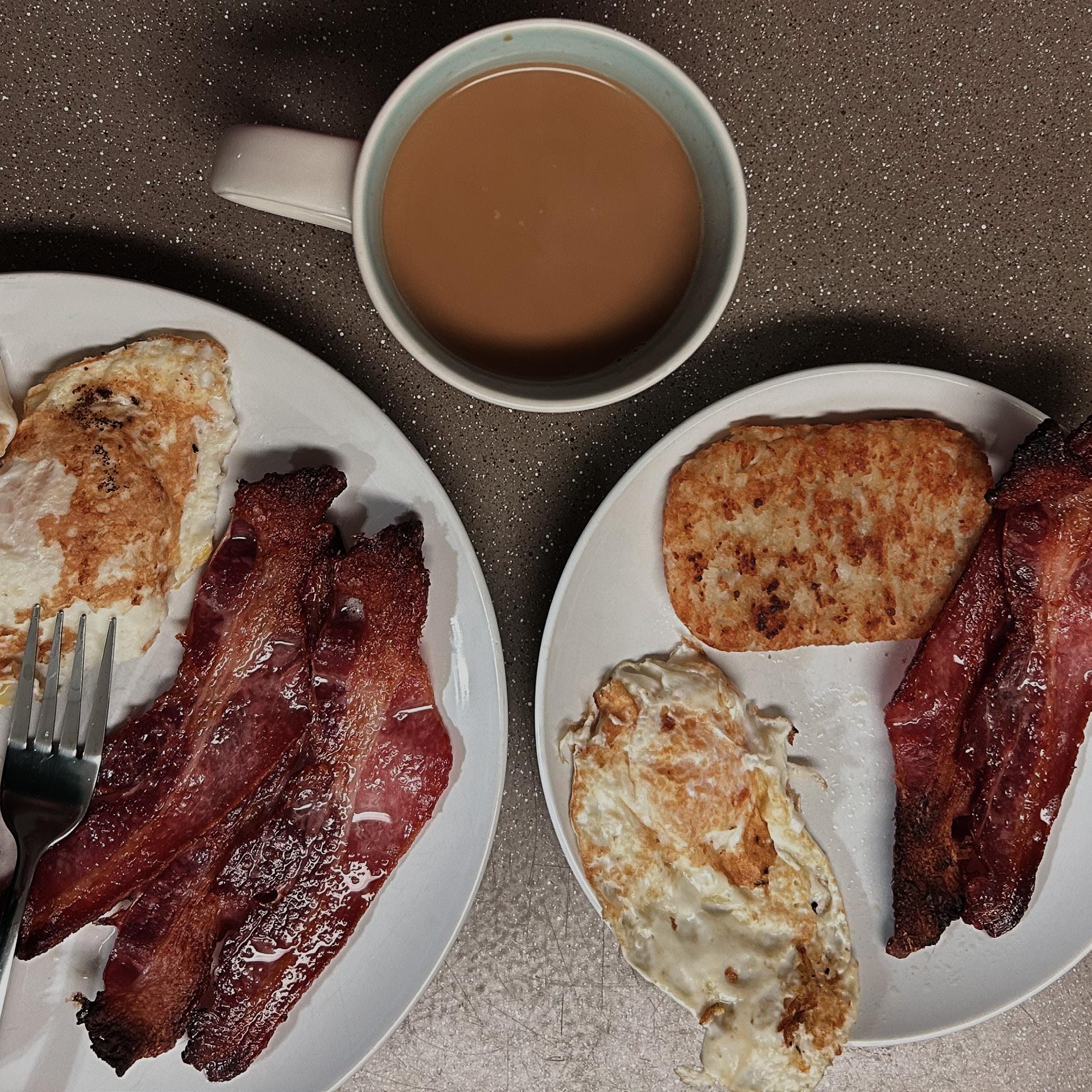
ariana protsman
I’m currently enjoying breakfast. I don’t mean just the morning meal, either. Most mornings I have a super quick breakfast with some eggs and toast (and don’t get me wrong that’s phenomenal), but I also love having breakfast for dinner and making a big deal about it. Pancakes, bacon, hashbrowns, and orange juice? Count me in, at literally any time of the day.
I look forward to enjoying a two week spring break before getting back into it for my final quarter at PSU. I look forward to actually reading something on my TBR or mindlessly playing Hogwarts Legacy with no consequences for staying up too late.

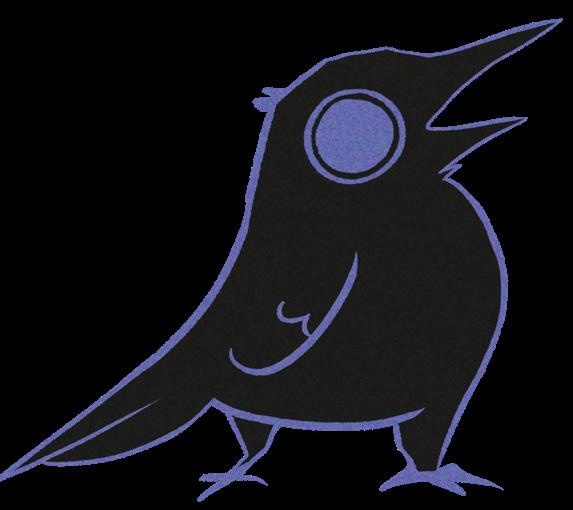
I’m currently enjoying revisiting books from childhood and adolescence, such as The Tale of Desperaux and the Austin family series from Madeleine L’Engle. I’ve also been using this gloomier weather as an opportunity to enjoy some cozy bars around town, like Pope House, Malpractice, and the Rams Head Pub (which is completely iconic and annoyingly getting shut down soon so go while you can!).
I’m a total sucker for trivia, and I recently discovered the gameshow “The Floor.” It’s visual, strategic, and an overall good time. If you like “Jeopardy!” and want a more relaxed (but higher stakes!) alternative to play along with and unwind, I highly recommend checking it out on Hulu.
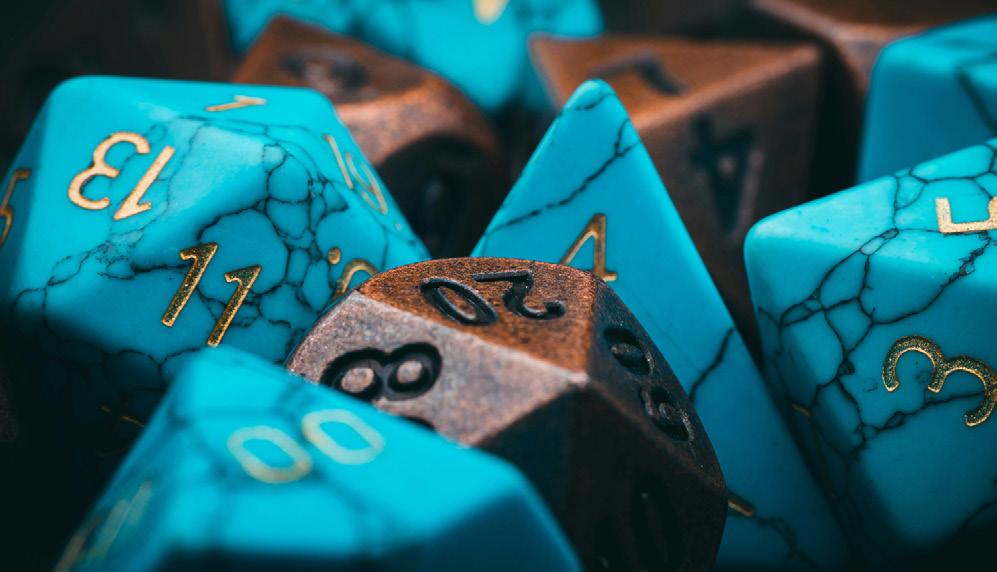
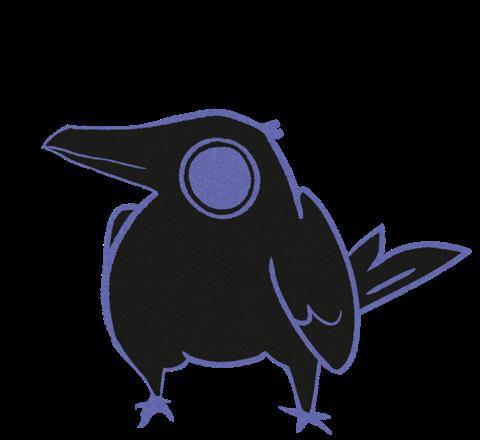
D&D! Had some good sessions lately as both a player and a DM, and I loved Dungeons & Drag Queens Season 2. Have gotten back into playing Raft too, which I love. Music-wise I’ve been on a Beach Boys stint.
Running. One of the coolest things about running is you always feel like you’ve achieved something after! I’m currently listening to mostly electronic — Tritonal, Massive Attack, and Daft Punk. Other than that, I’m also enjoying this Podcast called I’m Grand Mam.

